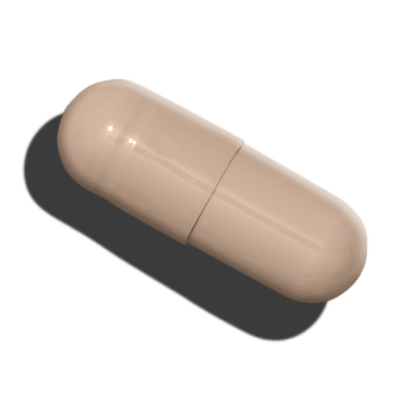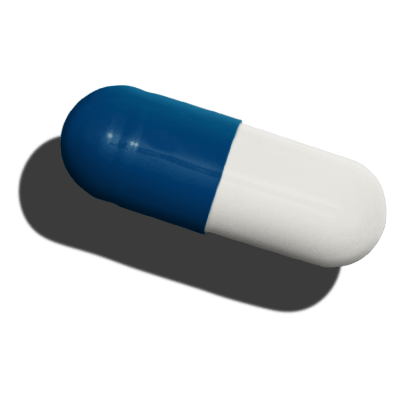Content
Seeking support for your mental health?
Duloxetine (Cymbalta): Facts, Usage and Side Effects

Whether you suffer from depression, anxiety or pain, there comes a point when you might have to accept that your condition isn’t going away on its own.
That you’ve given it enough time, and now is the time to reach out for help.
Getting treatment for depression — or any number of mental health conditions — can be a big step. A big, difficult step, for many.
But there are tools out there to help. One such tool: medication.
Whether you’ve been living with depression, anxiety, chronic pain or other diagnoses for years, or if you have yet to talk to your healthcare provider about it, duloxetine may provide some relief.
Read on to learn more about this antidepressant drug, and whether it makes sense to discuss it as a potential treatment option with your healthcare provider.
Content
Whether you suffer from depression, anxiety or pain, there comes a point when you might have to accept that your condition isn’t going away on its own.
That you’ve given it enough time, and now is the time to reach out for help.
Getting treatment for depression — or any number of mental health conditions — can be a big step. A big, difficult step, for many.
But there are tools out there to help. One such tool: medication.
Whether you’ve been living with depression, anxiety, chronic pain or other diagnoses for years, or if you have yet to talk to your healthcare provider about it, duloxetine may provide some relief.
Read on to learn more about this antidepressant drug, and whether it makes sense to discuss it as a potential treatment option with your healthcare provider.
What Is Duloxetine?
Duloxetine, also known by its brand name Cymbalta®, is primarily an antidepressant drug used to treat several conditions, including major depressive disorder (MDD) and generalized anxiety disorder, as well as diabetic nerve pain (diabetic peripheral neuropathy), fibromyalgia and chronic back pain or musculoskeletal pain.
It was approved by the Food and Drug Administration (FDA) in 2004 and is available by prescription.
Duloxetine comes in 20mg 30mg and 60mg delayed release capsules. The dose your healthcare provider prescribes is dependent on many factors, including your diagnosis and age.
How Does Duloxetine Work?
Duloxetine is known as a serotonin and norepinephrine reuptake inhibitor, or SNRI. This group of drugs works by blocking the brain’s reabsorption of two key neurotransmitters: serotonin and norepinephrine.
By leaving more of these chemicals free to work in the brain, SNRIs are thought to alter brain chemistry and the communication circuitry in the brain that can help regulate mood — and ultimately relieve depression and other symptoms.
Other SNRIs include: venlafaxine (Effexor XR®), levomilnacipran (Fetzima®) and desvenlafaxine (Pristiq®).
When you start taking duloxetine, it may take a while for you to see full benefits on your mood. Once your depression (or other) symptoms are relieved, it’s important to continue the medication, as stopping it can cause your symptoms to return. We have an article that answers the question of how fast Cymbalta works for anxiety in more detail.
Also, it’s important to not stop taking duloxetine suddenly and without a healthcare professional’s guidance, as it can lead to withdrawal effects such as irritability, nausea, dizziness, nightmares, headaches, vomiting and pins and needles sensations.
Duloxetine Dosage
Duloxetine (Cymbalta) doses come in 20 mg, 30 mg, and 60 mg capsules. Depending on the medical condition being treated, duloxetine dosing is adjusted.
However, the FDA recommends that the general starting doses for adults are as follows:
Major Depressive Disorder (MDD) - 40 to 60 mg/day
Generalized Anxiety Disorder (GAD) - 60 mg/day
Diabetic Nerve Pain (Diabetic Peripheral Neuropathy) - 60 mg/day
Fibromyalgia - 30 mg/day
Chronic Musculoskeletal Pain - 30 mg/day
If you miss a dose of duloxetine, take the missed dose as soon as you remember. However, if it is close to the time of your next dose, skip the missed dose and carry on as normal. Do not take a double dose.
If you miss more than two doses in a row, or accidentally take a double dose, contact your healthcare professional for medical advice.
Duloxetine Side Effects and Risks
The list of possible side effects of duloxetine is relatively long, but that doesn’t mean you’ll experience all (or even any) of them.
Common side effects of duloxetine in adults include nausea, decreased appetite, somnolence (drowsiness), dry mouth, constipation, decreased appetite and hyperhidrosis (excessive sweating).
Less common side effects include belching and sour stomach, increased heart rate, pins and needles feeling, changes in taste sensation, changes with ejaculation, decreased interest in sex, warmth in the upper body, erection problems, diarrhea, trembling of hands and feet, indigestion, heartburn and swollen joints.
Rare but serious side effects including liver failure, bleeding problems, high blood pressure, and heart attacks are also possible.
Your healthcare provider can help determine if you’re at a greater risk of these serious adverse effects given your medical history, and can provide medical advice on how to reduce your risk of side effects, in general.
To read about another potential side effect, check out: Does Cymbalta Cause Hair Loss?
Duloxetine Interactions and Warnings
As with most prescription drugs, duloxetine isn’t right for everyone.
For instance, people with chronic liver and kidney disease or glaucoma shouldn’t take it. While it may sometimes be prescribed as part of bipolar disorder treatment, duloxetine is not FDA approved for this use.
Also, there are several medications that can cause serious drug interactions — such as serotonin syndrome — when taken with duloxetine.
Talk to your healthcare professional before taking duloxetine if you take any of the following:
fluoxetine
linezolid
tramadol
phenelzine
NSAIDs
warfarin
ciprofloxacin
paroxetine
fluvoxamine
anticoagulants (such as ibuprofen)
other monoamine oxidase inhibitors (MAOIs)
other selective serotonin reuptake inhibitors (SSRIs)
other serotonin-norepinephrine reuptake inhibitors (SNRIs)
This list of drugs is not exhaustive. It is important to discuss any prescription and over-the-counter medications you are currently taking with your healthcare provider to rule out an increased risk of serious side effects such as serotonin syndrome.
Duloxetine can cause increased suicidal thoughts and behaviors, particularly in children, adolescents and young adults, so people in these age groups should seriously weigh the benefits vs. risks of this medication.
Related post: Can You Mix Cymbalta and Alcohol?
talk to a psychiatry provider. it’s never been easier
Talk to Your Healthcare Provider
Whether you are struggling with your mental health or suffering chronic pain, symptom relief can be a game changer.
Talk to your healthcare provider to see if duloxetine is the right fit for you. Or, talk to a hims online psychiatry provider about treating your anxiety or depression now.
5 Sources
- National Alliance on Mental Illness. (2020). Duloxetine (Cymbalta). NAMI. https://www.nami.org/About-Mental-Illness/Treatments/Mental-Health-Medications/Types-of-Medication/Duloxetine-(Cymbalta).
- U.S. National Library of Medicine. (2020). Duloxetine. MedlinePlus. https://medlineplus.gov/druginfo/meds/a604030.html.
- Mayo Clinic. (2019, October 5). Serotonin and norepinephrine reuptake inhibitors (SNRIs). Mayo Clinic. https://www.mayoclinic.org/diseases-conditions/depression/in-depth/antidepressants/art-20044970.
- Volpi-Abadie, J., Kaye, A. M., & Kaye, A. D. (2013). Serotonin syndrome. The Ochsner journal, 13(4), 533–540. https://www.ncbi.nlm.nih.gov/pmc/articles/PMC3865832/.
- Food and Drug Administration. (2008, December 4). Cymbalta (duloxetine hydrochloride) capsules. FDA. https://www.accessdata.fda.gov/drugsatfda_docs/label/2010/022516lbl.pdf
Editorial Standards
Hims & Hers has strict sourcing guidelines to ensure our content is accurate and current. We rely on peer-reviewed studies, academic research institutions, and medical associations. We strive to use primary sources and refrain from using tertiary references. See a mistake? Let us know at blog@forhims.com!
This article is for informational purposes only and does not constitute medical advice. The information contained herein is not a substitute for and should never be relied upon for professional medical advice. Always talk to your doctor about the risks and benefits of any treatment. Learn more about our editorial standards here.
Mary Lucas, RN
Mary is an accomplished emergency and trauma RN with more than 10 years of healthcare experience.
As a data scientist with a Masters degree in Health Informatics and Data Analytics from Boston University, Mary uses healthcare data to inform individual and public health efforts.




